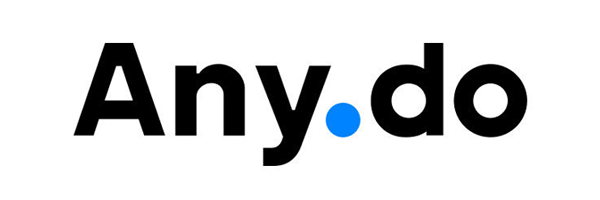When you’re under pressure to launch a real, scalable app fast and there’s no ready-made solution to start from, the technical decisions you make up front have a big impact on your ability to deliver. That was the case for the Salesforce engineering team behind building Salesforce+, the company’s streaming platform for live events and original business content.
With the goal of launching in time for Dreamforce, one of the world’s largest technology events, the team needed to move fast to meet the timeline. Salesforce+ would play a key role in providing their community with digital-first experiences, supporting a broader strategy to reach professionals looking to engage with the brand in a more scalable, media-rich format.
Launching a streaming platform on a tight timeline
While the strategic goals for Salesforce+ were clear, translating them into a working platform came with a distinct set of technical challenges. This wasn’t just a fast build, it was a high-stakes, high-visibility project. The engineering team needed to create a solution that could meet Salesforce’s internal standards for security, scalability, and user experience.
There was no existing infrastructure within Salesforce that matched the requirements. The team wasn’t replatforming or modernizing something old, they were starting new, with the expectation that Salesforce+ would not only launch smoothly but grow into a long-term, production-grade service. That meant designing for speed and scale simultaneously, while ensuring the architecture could support evolving demands from both internal stakeholders and a global audience.
Rather than spend cycles evaluating external tools or building their own solution from scratch, the team chose to build the platform on Heroku, a platform in the Salesforce family already proven across internal teams. Familiar tooling, fast spin-up, and minimal operational overhead made it the practical choice for balancing rapid delivery with long-term maintainability.
Launching fast with a developer-friendly stack that scales
With the Heroku platform, the engineering team was able to get started quickly, giving them the head start they needed to focus on feature development rather than infrastructure. The initial implementation centered around Heroku Postgres, which handled all content and user data. A GraphQL API layer, also hosted on Heroku, exposed this data to the frontend. To support performance and flexibility, the team also used Heroku Key-Value Store to manage caching, while built-in monitoring and alerting helped them stay on top of latency, errors, and other key performance signals.
As Salesforce+ matured beyond the Dreamforce launch into a year-round streaming platform, the Heroku stack evolved alongside it. Dyno auto-scaling helped the team respond to variable traffic demands without manual intervention. Their deployment scaffolding, including environment staging and automation, was likewise built on Heroku, streamlining delivery across development, staging, and production. A separate Heroku Postgres instance mirrored analytics data for reporting dashboards, helping ensure a clean separation between production workloads and read-heavy data operations.
Heroku let us move fast and stay focused on building. We launched Salesforce+ on time without getting slowed down by infrastructure.
Powering long-term engagement and business impact with Heroku
With Heroku at the core of its backend, Salesforce+ met the challenge of launching a high-impact streaming platform on time and positioned the app to scale as part of a long-term, strategic investment. The flexibility, speed, reliability and seamless developer experience of Heroku helped the team deliver on both short-term and long-term goals: going live for Dreamforce, and evolving into a trusted channel for year-round digital engagement.
Expanded reach, without infrastructure bottlenecks
Salesforce+ launched in time for Dreamforce, delivering over 100 hours of live and on-demand content to a global audience. Powered by Heroku’s scalability, the platform more than doubled international participation, from 8 countries at past in-person events to 22. Today, Salesforce+ continues to drive strong engagement, with 30% of MVPs—Salesforce’s most active community members—now connecting with the brand through the platform.
Long-term growth, minimal maintenance
After the initial launch, Heroku helped the team transition from sprint to steady state. With deployment scaffolding and analytics mirroring built on Heroku, the platform has grown into a scalable foundation that supports always-on programming, content personalization, and internal editorial workflows—without requiring a large operations team to maintain. Heroku’s low overhead and built-in best practices have made it easy to extend and evolve the platform over time.
Strategic impact across the business
Salesforce+ now plays a pivotal role in the company’s marketing motion, credited with influencing hundreds of millions of dollars in the company’s pipeline. Heroku’s role as a reliable, developer-friendly platform gave the team the confidence to launch fast and the foundation to keep building.
Salesforce+ has become a powerful driver of engagement and pipeline. Heroku helped us move fast, scale confidently, and deliver a premium digital experience that continues to grow with our business.
What’s next for Salesforce+?
Today, Heroku continues to power the majority of the key components across the middle and backend tier of Salesforce+, enabling the team to iterate quickly, maintain reliability, and scale globally as audience demand grows.
Salesforce+ regularly releases new content, from expert conversations to learning resources covering Salesforce’s latest innovations, including Agentforce. As part of the ongoing rearchitecture, the team is introducing a new Heroku-hosted CMS to streamline content management and accelerate editorial workflows. Backed by Heroku, the team can continue to launch and scale these experiences without custom infrastructure, staying aligned with evolving company priorities. Explore the Salesforce+ library to discover the latest content by topic or role, including AI, IT and App Dev, Data, and more.
Launch your next project with Heroku
How Salesforce+ did it
- Used Heroku Postgres to manage all Salesforce+ content and user data, powering personalized viewing experiences for a global audience
- Exposed platform data to the frontend with a GraphQL API layer hosted on Heroku
- Mirrored data to a separate Heroku Postgres instance for analytics and reporting, keeping production workloads isolated from read-heavy dashboards



